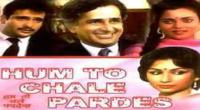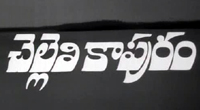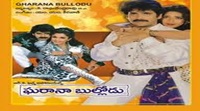This article needs additional citations for verification. (April 2016) (Learn how and when to remove this template message) |


Radio is the technology of using radio waves to carry information, such as sound, by systematically modulating properties of electromagnetic energy waves transmitted through space, such as their amplitude, frequency, phase, or pulse width. When radio waves strike an electrical conductor, the oscillating fields induce an alternating current in the conductor. The information in the waves can be extracted and transformed back into its original form.
Radio systems need a transmitter to modulate (change) some property of the energy produced to impress a signal on it, for example using amplitude modulation or angle modulation (which can be frequency modulation or phase modulation). Radio systems also need an antenna to convert electric currents into radio waves, and radio waves into an electric current. An antenna can be used for both transmitting and receiving. The electrical resonance of tuned circuits in radios allow individual frequencies to be selected. The electromagnetic wave is intercepted by a tuned receiving antenna. A radio receiver receives its input from an antenna and converts it into a form that is usable for the consumer, such as sound, pictures, digital data, measurement values, navigational positions, etc. Radio frequencies occupy the range from a 3 kHz to 300 GHz, although commercially important uses of radio use only a small part of this spectrum.
A radio communication system requires a transmitter and a receiver, each having an antenna and appropriate terminal equipment such as a microphone at the transmitter and a loudspeaker at the receiver in the case of a voice-communication system.
Contents
Etymology
The term "radio" is derived from the Latin word "radius", meaning "spoke of a wheel, beam of light, ray". It was first applied to communications in 1881 when, at the suggestion of French scientist Ernest Mercadier, Alexander Graham Bell adopted "radiophone" (meaning "radiated sound") as an alternate name for his photophone optical transmission system. However, this invention would not be widely adopted.
Following Heinrich Hertz's establishment of the existence of electromagnetic radiation in the late 1880s, a variety of terms were initially used for the phenomenon, with early descriptions of the radiation itself including "Hertzian waves", "electric waves", and "ether waves", while phrases describing its use in communications included "spark telegraphy", "space telegraphy", "aerography" and, eventually and most commonly, "wireless telegraphy". However, "wireless" included a broad variety of related electronic technologies, including electrostatic induction, electromagnetic induction and aquatic and earth conduction, so there was a need for a more precise term referring exclusively to electromagnetic radiation.
The first use of radio- in conjunction with electromagnetic radiation appears to have been by French physicist Édouard Branly, who in 1890 developed a version of a coherer receiver he called a radio-conducteur. The radio- prefix was later used to form additional descriptive compound and hyphenated words, especially in Europe. For example, in early 1898 the British publication The Practical Engineer included a reference to "the radiotelegraph" and "radiotelegraphy", while the French text of both the 1903 and 1906 Berlin Radiotelegraphic Conventions includes the phrases radiotélégraphique and radiotélégrammes.
The use of "radio" as a standalone word dates back to at least December 30, 1904, when instructions issued by the British Post Office for transmitting telegrams specified that "The word 'Radio'... is sent in the Service Instructions". This practice was universally adopted, and the word "radio" introduced internationally, by the 1906 Berlin Radiotelegraphic Convention, which included a Service Regulation specifying that "Radiotelegrams shall show in the preamble that the service is 'Radio'".
The switch to "radio" in place of "wireless" took place slowly and unevenly in the English-speaking world. Lee de Forest helped popularize the new word in the United States—in early 1907 he founded the DeForest Radio Telephone Company, and his letter in the June 22, 1907 Electrical World about the need for legal restrictions warned that "Radio chaos will certainly be the result until such stringent regulation is enforced". The United States Navy would also play a role. Although its translation of the 1906 Berlin Convention used the terms "wireless telegraph" and "wireless telegram", by 1912 it began to promote the use of "radio" instead. The term started to become preferred by the general public in the 1920s with the introduction of broadcasting. ("Broadcasting" is based upon an agricultural term meaning roughly "scattering seeds widely".) British Commonwealth countries continued to commonly use the term "wireless" until the mid-20th century, though the magazine of the British Broadcasting Corporation in the UK has been called Radio Times since its founding in the early 1920s.
In recent years the more general term "wireless" has gained renewed popularity, even for devices using electromagnetic radiation, through the rapid growth of short-range computer networking, e.g., Wireless Local Area Network (WLAN), Wi-Fi, and Bluetooth, as well as mobile telephony, e.g., GSM and UMTS cell phones. Today, the term "radio" specifies the transceiver device or chip, whereas "wireless" refers to the lack of physical connections; thus equipment employs embedded radio transceivers, but operates as wireless devices over wireless sensor networks.
Processes
Radio systems used for communication have the following elements. With more than 100 years of development, each process is implemented by a wide range of methods, specialised for different communications purposes.
Transmitter and modulation
Each system contains a transmitter. This consists of a source of electrical energy, producing alternating current of a desired frequency of oscillation. The transmitter contains a system to modulate (change) some property of the energy produced to impress a signal on it. This modulation might be as simple as turning the energy on and off, or altering more subtle properties such as amplitude, frequency, phase, or combinations of these properties. The transmitter sends the modulated electrical energy to a tuned resonant antenna; this structure converts the rapidly changing alternating current into an electromagnetic wave that can move through free space (sometimes with a particular polarization).
Amplitude modulation of a carrier wave works by varying the strength of the transmitted signal in proportion to the information being sent. For example, changes in the signal strength can be used to reflect the sounds to be reproduced by a speaker, or to specify the light intensity of television pixels. It was the method used for the first audio radio transmissions, and remains in use today. "AM" is often used to refer to the medium wave broadcast band (see AM radio), but it is used in various radiotelephone services such as the Citizens Band, amateur radio and especially in aviation, due to its ability to be received under very weak signal conditions and its immunity to capture effect, allowing more than one signal to be heard simultaneously.
Frequency modulation varies the frequency of the carrier. The instantaneous frequency of the carrier is directly proportional to the instantaneous value of the input signal. FM has the "capture effect" whereby a receiver only receives the strongest signal, even when others are present. Digital data can be sent by shifting the carrier's frequency among a set of discrete values, a technique known as frequency-shift keying. FM is commonly used at Very high frequency (VHF) radio frequencies for high-fidelity broadcasts of music and speech (see FM broadcasting). Analog TV sound is also broadcast using FM.
Angle modulation alters the instantaneous phase of the carrier wave to transmit a signal. It may be either FM or phase modulation (PM).
Antenna
An antenna (or aerial) is an electrical device which converts electric currents into radio waves, and vice versa. It is usually used with a radio transmitter or radio receiver. In transmission, a radio transmitter supplies an electric current oscillating at radio frequency (i.e. high frequency AC) to the antenna's terminals, and the antenna radiates the energy from the current as electromagnetic waves (radio waves). In reception, an antenna intercepts some of the power of an electromagnetic wave in order to produce a tiny voltage at its terminals, that is applied to a receiver to be amplified. Some antennas can be used for both transmitting and receiving, even simultaneously, depending on the connected equipment.
Propagation
Once generated, electromagnetic waves travel through space either directly, or have their path altered by reflection, refraction or diffraction. The intensity of the waves diminishes due to geometric dispersion (the inverse-square law); some energy may also be absorbed by the intervening medium in some cases. Noise will generally alter the desired signal; this electromagnetic interference comes from natural sources, as well as from artificial sources such as other transmitters and accidental radiators. Noise is also produced at every step due to the inherent properties of the devices used. If the magnitude of the noise is large enough, the desired signal will no longer be discernible; the signal-to-noise ratio is the fundamental limit to the range of radio communications.
Resonance
Electrical resonance of tuned circuits in radios allow individual stations to be selected. A resonant circuit will respond strongly to a particular frequency, and much less so to differing frequencies. This allows the radio receiver to discriminate between multiple signals differing in frequency.
Receiver and demodulation
The electromagnetic wave is intercepted by a tuned receiving antenna; this structure captures some of the energy of the wave and returns it to the form of oscillating electrical currents. At the receiver, these currents are demodulated, which is conversion to a usable signal form by a detector sub-system. The receiver is "tuned" to respond preferentially to the desired signals, and reject undesired signals.
Early radio systems relied entirely on the energy collected by an antenna to produce signals for the operator. Radio became more useful after the invention of electronic devices such as the vacuum tube and later the transistor, which made it possible to amplify weak signals. Today radio systems are used for applications from walkie-talkie children's toys to the control of space vehicles, as well as for broadcasting, and many other applications.
A radio receiver receives its input from an antenna, uses electronic filters to separate a wanted radio signal from all other signals picked up by this antenna, amplifies it to a level suitable for further processing, and finally converts through demodulation and decoding the signal into a form usable for the consumer, such as sound, pictures, digital data, measurement values, navigational positions, etc.


.jpg)


















